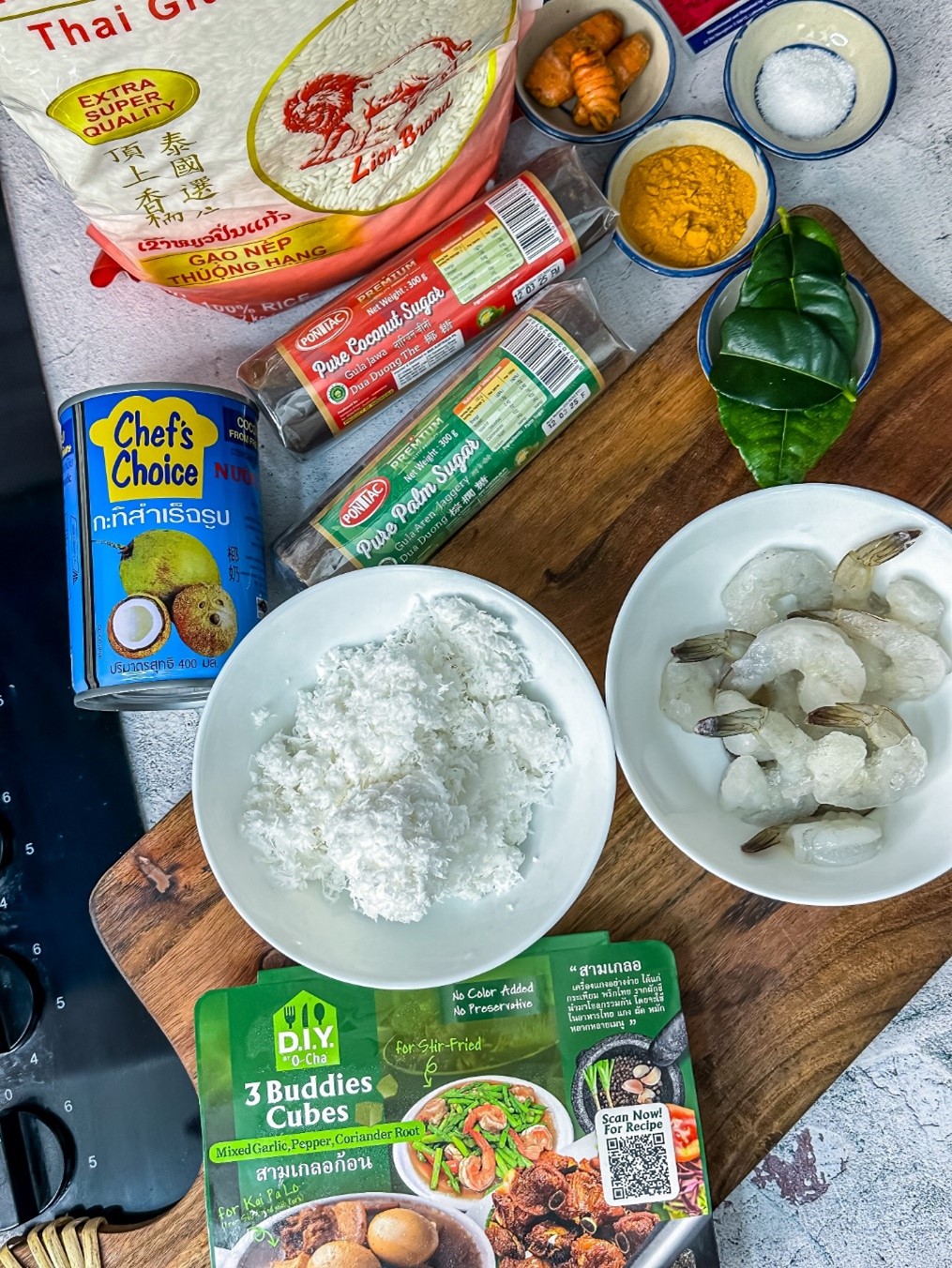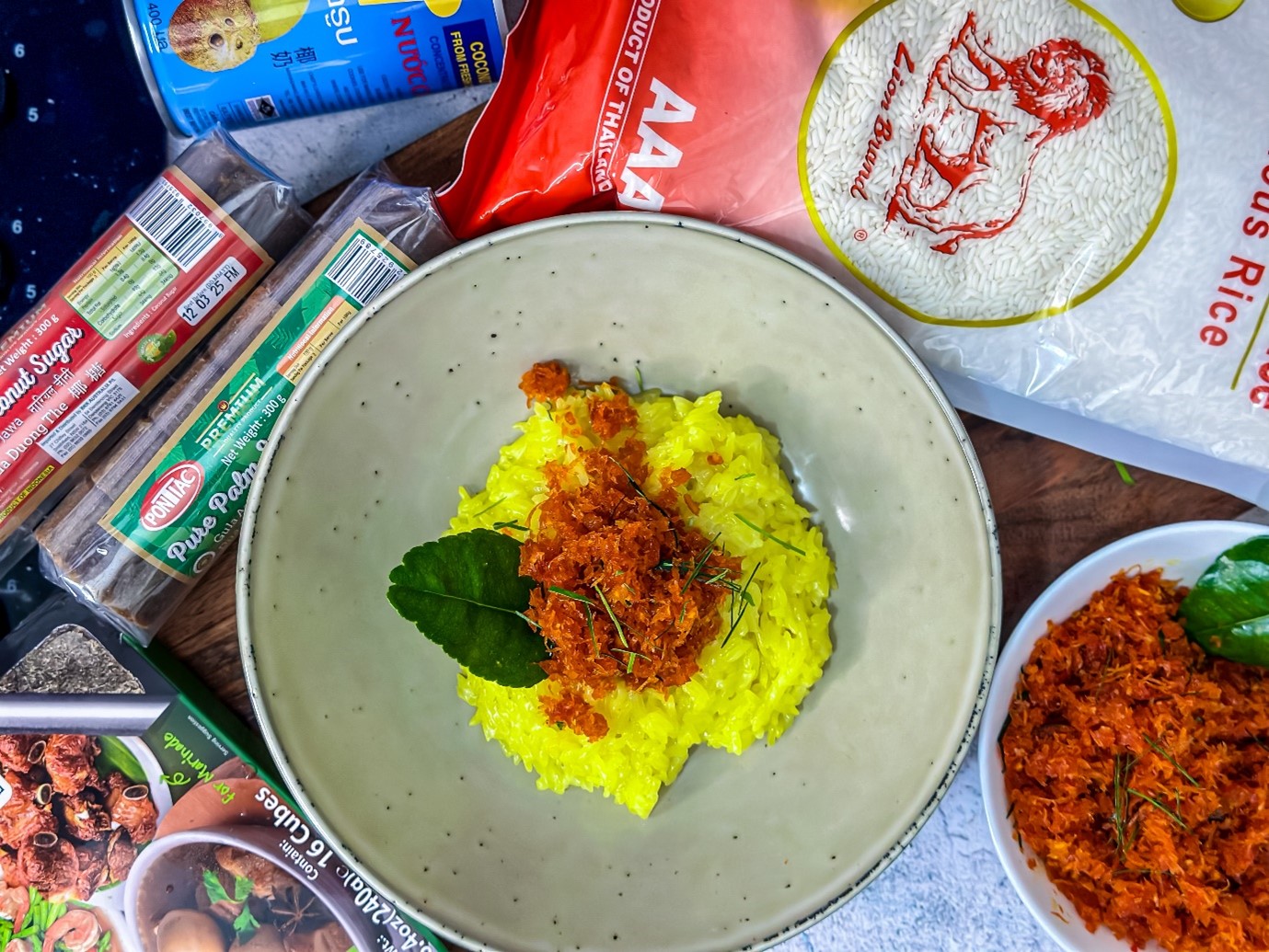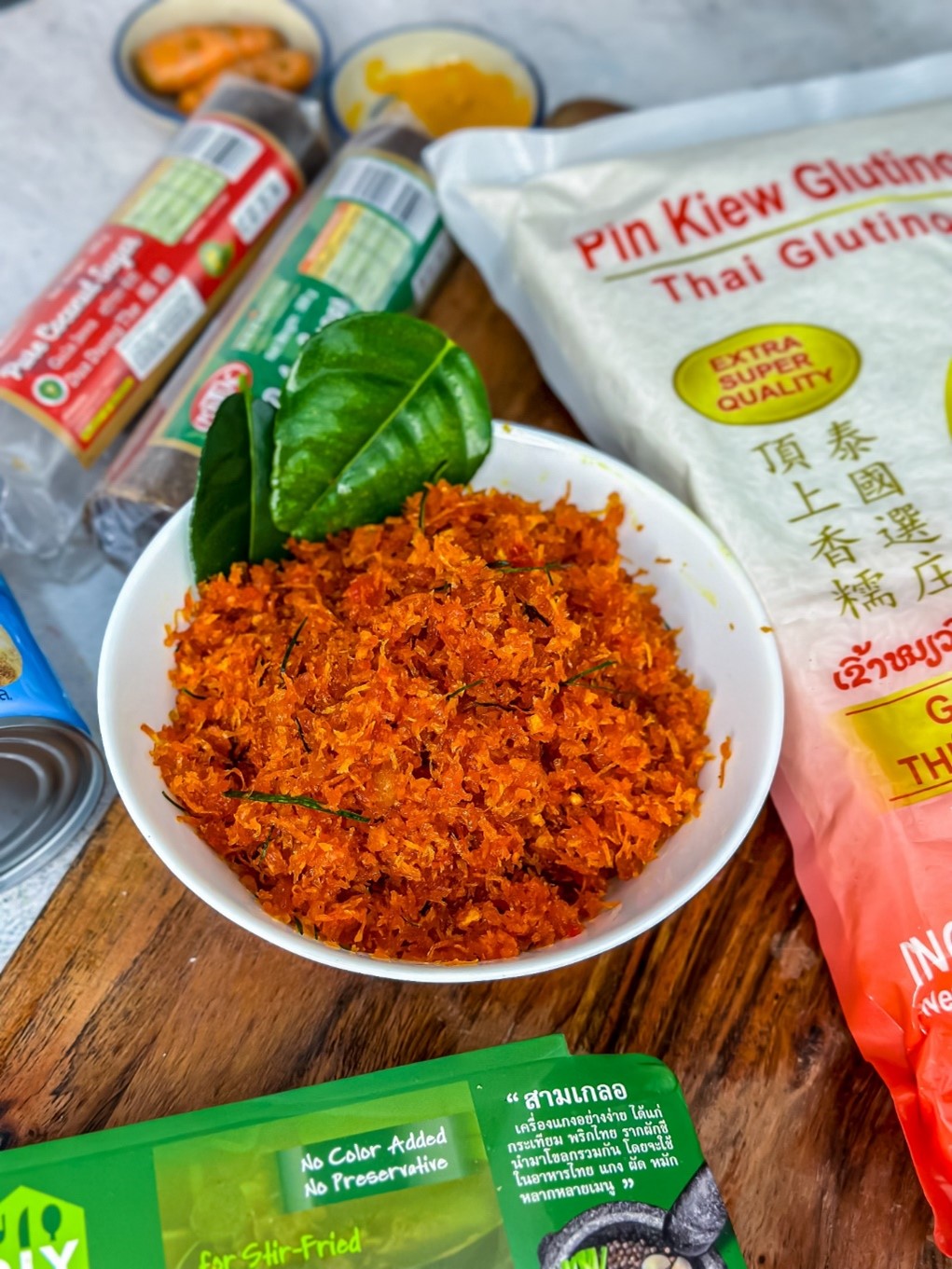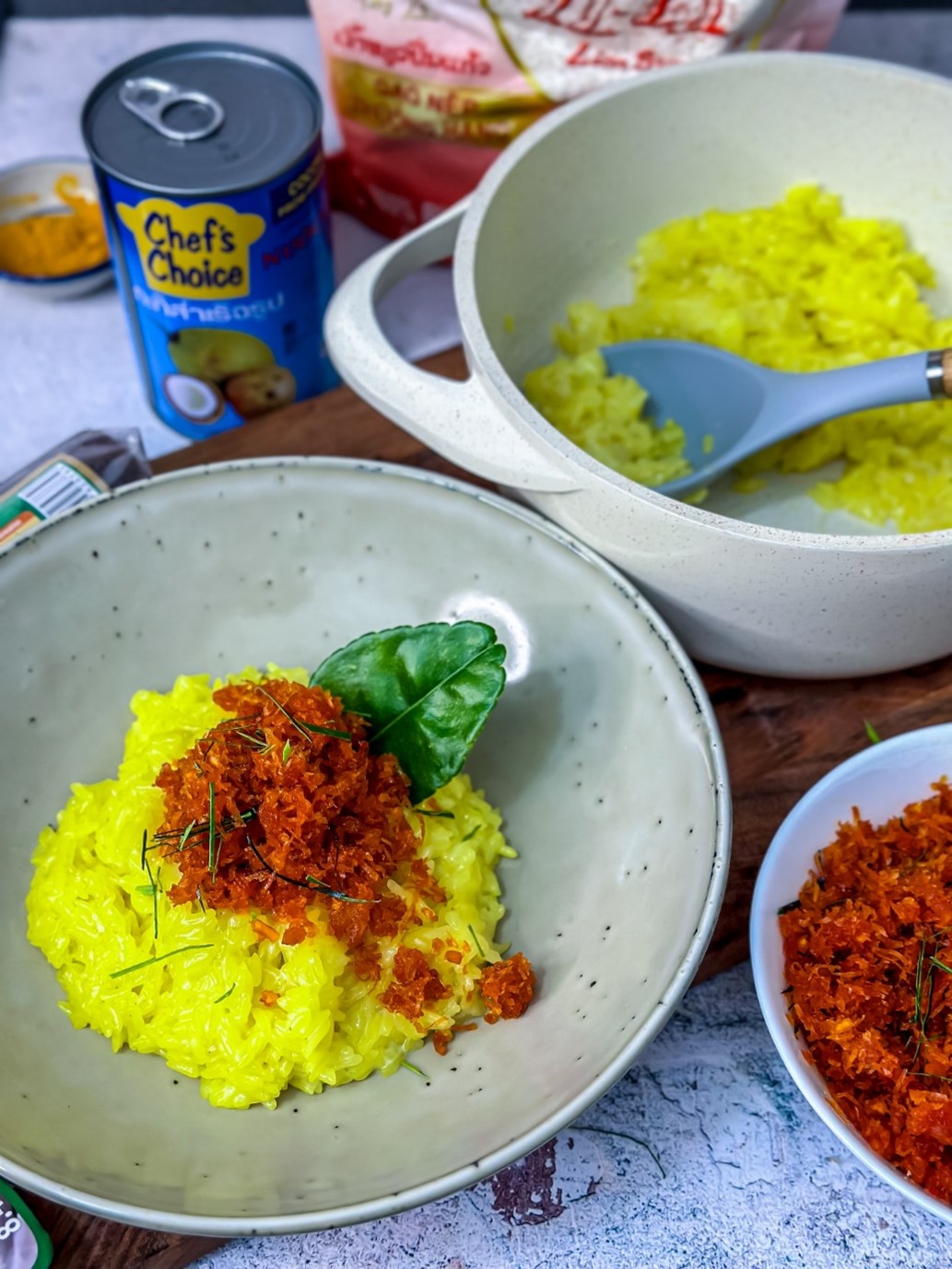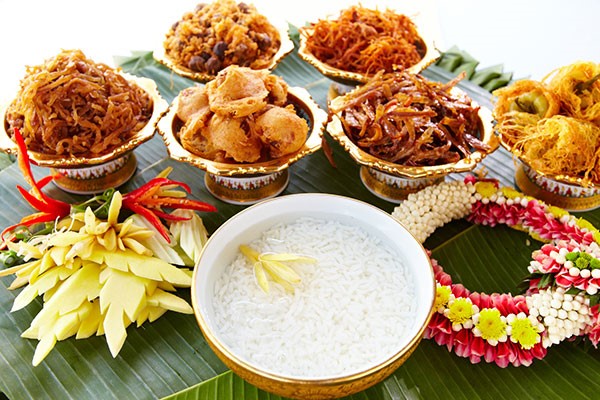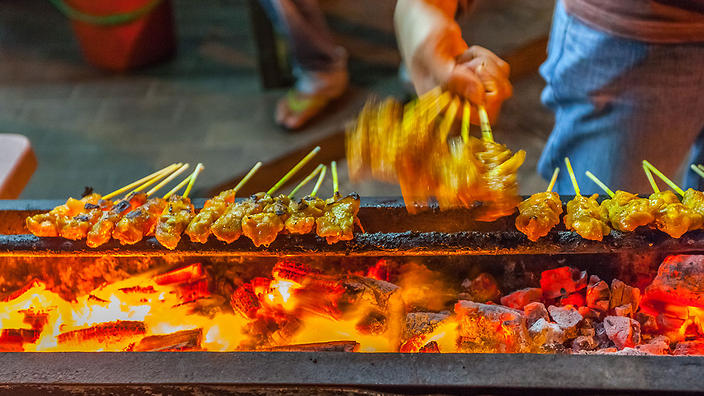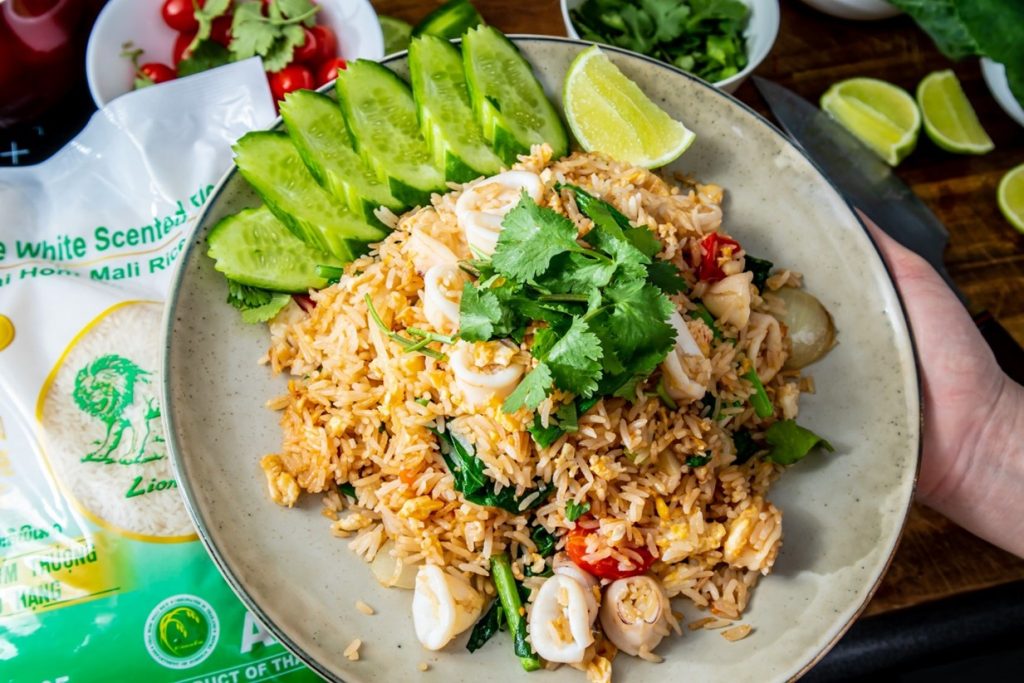“ข้าวเหนียวเหลืองหน้ากุ้ง” or “Yellow Sticky Rice with Shrimp” is a delightful sweet and savoury dessert that brings together the soft, glutinous texture of sticky rice and the well-seasoned, aromatic blend of shredded coconut and shrimp. At the heart of this dish is the star ingredient – sticky rice, renowned for its unique, glutinous consistency, making it a staple in Thai cuisine. The rice undergoes a meticulous process of soaking, steaming, and transforming into a soft, chewy texture, acquiring its distinctive yellow hue from turmeric powder.
Preparing “ข้าวเหนียวเหลืองหน้ากุ้ง” is fun, easy, and enjoyable. In this video, we cook sticky rice using the microwave method for convenience, and you’ll be pleasantly surprised by the outcome of its signature sticky yet fluffy consistency. The Coconut Milk Mixture for Sticky Rice is a crucial element in creating the delightful and creamy flavour that complements the chewy texture of the rice.
Shrimp, marinated with a blend of Thai spices including garlic, pepper, coriander roots, and the crunchiness of shredded coconut, is then cooked to perfection. The dish is often served with a side of herbs like kaffir lime leaves, enhancing its visual appeal and nutritional value. This summer treat is stable and can be found at local markets in Thailand – a comforting snack with a surprising and beautiful presentation.
Ingredients:
- 1 cup Lion Brand Glutinous Rice (sticky rice)
- 1 cup Chef’s Choice coconut milk
- 200g shrimp, peeled and deveined.
- 1 tablespoon turmeric powder
- 2 tablespoon white sugar
- 1 tablespoon salt
- ¼ cup Julienned Kaffir lime leaf or O-Cha Frozen Lime Leave
- 1 cube O-Cha Garlic, Pepper, Coriander roots garlic
- 3 tablespoons Pontiac coconut sugar
- 2 tablespoons vegetable oil
Instructions:
Prepare the Sticky Rice using microwave(ข้าวเหนียว):
- Rinse glutinous rice under cold water until clear.
- Soak rice with turmeric for at least 4-6 hours or until it turns yellow.
- Drain and place glutinous rice in a microwave container, add water just above the rice.
- Microwave for 7 minutes, stirring occasionally.
Coconut Milk Mixture for Sticky Rice (กะทิสำหรับมูน):
- In a mixing bowl, combine Chef’s Choice coconut milk, white sugar, and salt.
- Stir the mixture well until the sugar and salt are completely dissolved.
- Ensure a smooth consistency, creating a sweet and savoury base for the sticky rice.
Heating the Coconut Milk Mixture:
- Transfer the mixture to a saucepan or pot.
- Heat over medium heat until the mixture is warm, ensuring not to bring it to a boil.
- Stir occasionally to prevent the mixture from sticking to the bottom.
Pouring over the Steamed Glutinous Rice:
- Pour the warm coconut milk mixture over the rice.
- Use a spatula to gently mix the coconut milk with the rice, ensuring an even distribution.
- Cover the rice and let it sit for about 30 minutes or until the rice fully absorbs the coconut milk.
Prepare Shrimp Topping (หน้ากุ้ง):
- Heat vegetable oil in a pan over medium heat.
- Add O-Cha garlic, pepper, and coriander cube, fry until aromatic.
- Add deveined chopped prawns, shredded O-Cha coconut meat, and Pontiac coconut sugar.
- Add a yellow and orange food colouring for vibrancy.
- Stir until the shrimp is cooked and the mixture is dry. Add finely chopped shrimp, and julienned Kaffir lime leaf.
- Remove from heat.
Serve:
- Scoop the coconut-flavoured sticky rice into bowls.
- Top with the shrimp mixture.
- Garnish with julienned kaffir lime leaves and lime leaves if desired.
- Serve and enjoy your delicious Sticky Rice with Shrimp! If you have a banana leaf, use it on the plate and display it the traditional way.
This traditional Thai dish offers a unique combination of textures and flavours. The softness of the sticky rice, paired with savoury shrimp, shredded coconut meat, and coconut cream, creates a delightful, sweet dish loved by locals and a great addition to your dessert menu. Feel free to customise the recipe to suit your taste preferences, and don’t hesitate to experiment with different herbs or additional ingredients to make it your own. Enjoy your homemade Yellow Sticky Rice with Shrimp!


